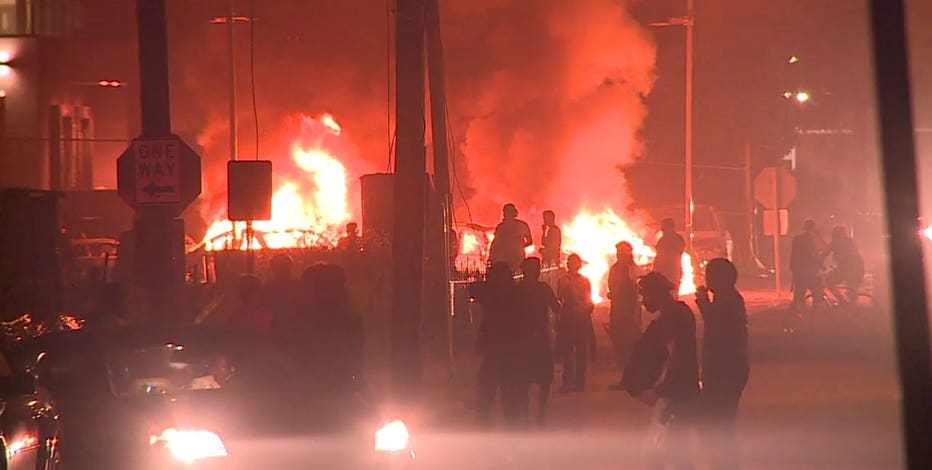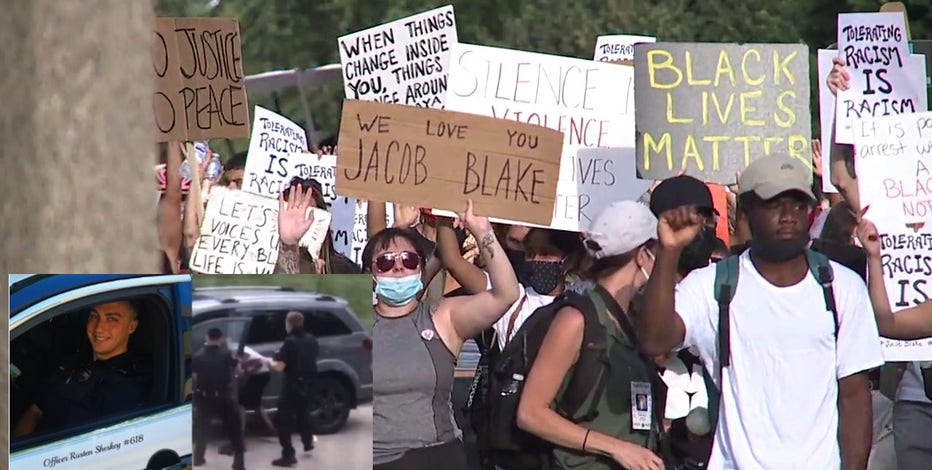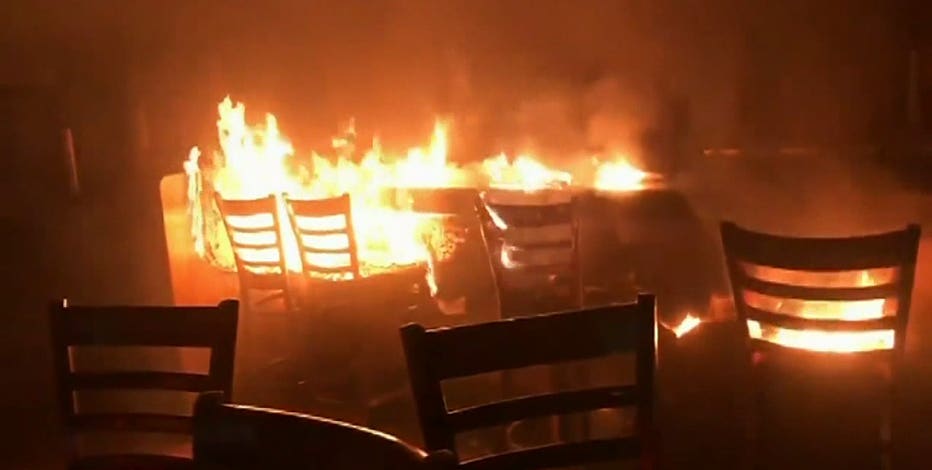'We all respond immediately:' MABAS meant 25 departments battling 30+ fires during Kenosha unrest
KENOSHA, Wis. - As the unrest in the wake of the police shooting of Jacob Blake Sunday, Aug. 23 carried into Monday, more than three dozen fires reported -- some nearly leveling an entire block. All told, the Kenosha Fire Department responded to more than 37 fires as well as calls for medical service -- helped out in large part through the Mutual Aid Box Alarm System or MABAS.
Images of cars burned to a crisp represent one's livelihood lost in a flash, as flames seemingly wicked from one place to another Monday night and into Tuesday morning.

As the light from the fires waned, sunlight gave way to the smoldering wreckage that was left.
"Is there words for it?" said Keith McCoy. "The picture should say it all. There are no words for it."
KFD officials said major fire on 60th Street, from 11th Avenue to 14th Avenue, nearly leveled several city blocks. Losses included the probation office, the Department of Corrections, several local community businesses and several residences. The Kenosha Uptown area also sustained substantial losses. This area was anchored by the Danish Brotherhood Building, which dated back to the early 1900s, and many small businesses and mercantile shops that served this area of the city.
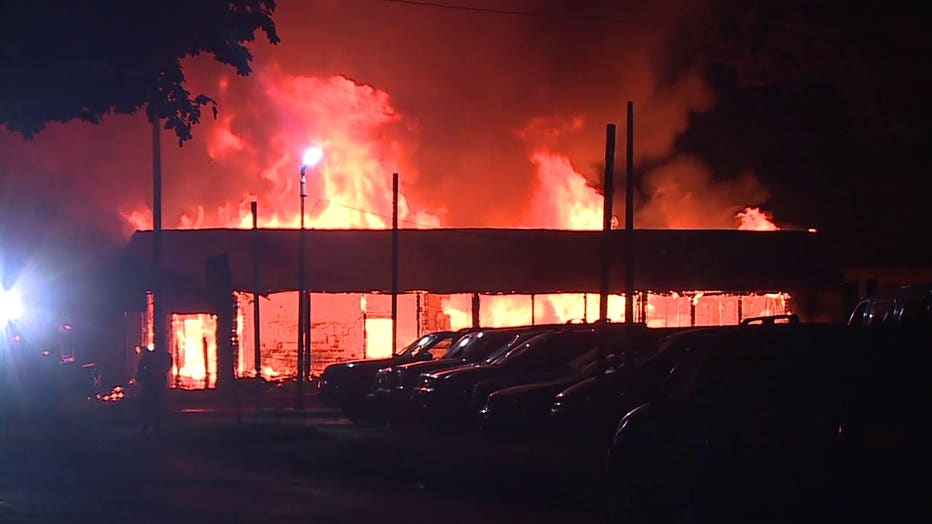
"Their command staff is going in multiple, different directions, to multiple fires," said David Wilkinson, assistant chief with the Pleasant Prairie Fire Department. "It takes a lot of energy out of them, and you could have, potentially, competing requests for resources."
Assistant Chief Wilkinson is the vice president of Wisconsin MABAS Division 101 in Kenosha County. In Monday night's case, Kenosha reached a fifth alarm, ultimately getting help from 25 different departments -- including Illinois -- sending more than a dozen engines, a handful of ladder trucks, squads and ambulances totaling more than 150 personnel.
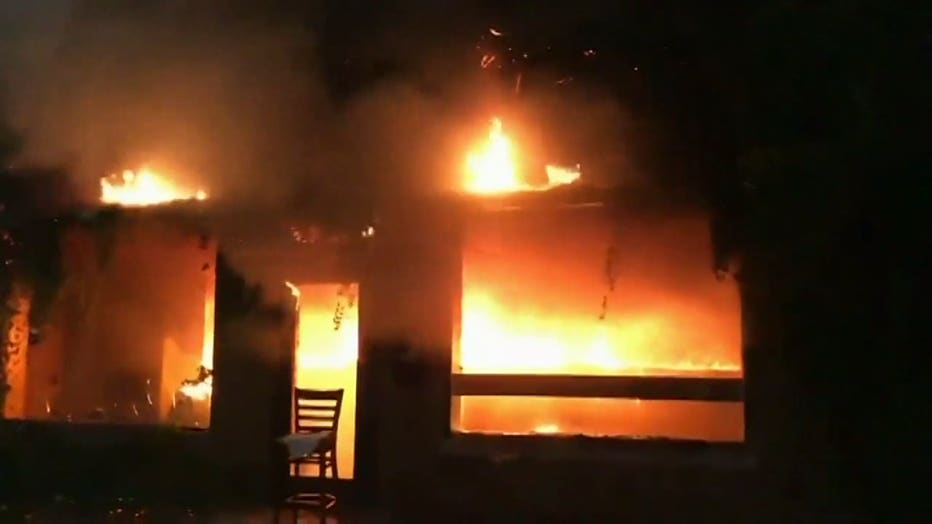
"And that's eventually where they ended up on that night when we had all the fires," said Assistant Chief Wilkinson.
Wilkinson pointed to the events Monday night in highlighting the decades-long importance of the mutual aid system.
"We all respond immediately on that still alarm when they find that they're beyond their scope of what they can handle with their own resources," said Wilkinson.

While more often used by smaller departments, it still plays a large role when departments, no matter the size, need help.
Wilkinson said the events of Monday night and Tuesday also can give the mutual aid system the ability to assess what happened, and what can be changed, in the future.
Related
Kenosha police chief: 175 arrests in 7 days since shooting of Jacob Blake
Those arrests include people from 44 different cities, the chief said, noting that 102 of the people processed listed addresses from outside Kenosha.
Related
Kenosha police union says Jacob Blake was armed with a knife, DOJ won't say whether he was holding it
The city was a lot quieter Sunday, one week after the shooting of Jacob Blake by Kenosha police, but there's still a lot we don't know, with the investigation ongoing, including what justice for Jacob Blake looks like, and how Kenosha moves forward.
Related
'Help rebuild what was lost:' Kenosha mayor seeks $30M from state after week of violent protests
The release from the mayor noted "the damage caused by violent demonstrators and rioters, led largely by people from outside the city, destroyed dozens of businesses, homes and city buildings."


